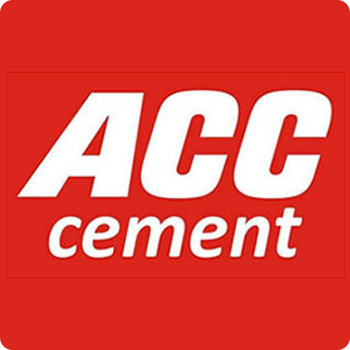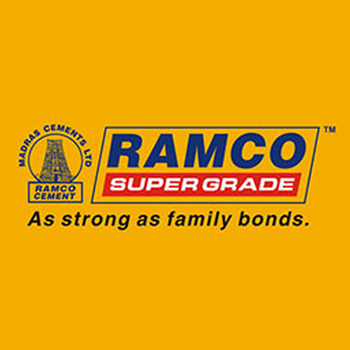When it comes to construction, choosing the right cement can make or break your project. Cement isn’t just cement; different grades serve different purposes, offering varying levels of strength, durability, and application suitability. If you’re confused about which grade of cement to use for your project, this guide will help you understand cement grades 33, 43, and 53, their unique strengths, and appropriate applications.
What Are Cement Grades?
The term "cement grades" refers to the compressive strength of cement after 28 days of setting, determined in megapascals (MPa). This number indicates the level of pressure the cement can withstand without cracking or deteriorating.
For example:
-
Grade 33 cement reaches a compressive strength of 33 MPa after 28 days.
-
Grade 43 cement achieves 43 MPa within the same period.
-
Grade 53 cement offers a high strength of 53 MPa.
Each grade plays a unique role in construction projects, depending on the structural requirements, climate conditions, and budget factors. Understanding these grades ensures the structural integrity and durability of your buildings.
OPC vs PPC in Cement Grades
Cement grades typically pertain to Ordinary Portland Cement (OPC). However, cement is also available as Portland Pozzolana Cement (PPC), which incorporates fly ash or volcanic ash. While OPC sets quickly, PPC takes more time to cure but provides excellent long-term durability.
Cement Grade 33
Compressive Strength: 33 MPa after 28 days
Grade 33 cement is mainly used in masonry work and non-load-bearing structures. It provides adequate strength for smaller projects but has largely been replaced by higher-grade options in modern construction.
Common Uses of Grade 33 Cement:
-
Masonry Work and Brickwork: Ideal for general masonry, as it does not require high compressive strength.
-
Plastering Applications: Its smooth finish makes it suitable for interior walls.
-
Low-Rise Residential Construction: Grade 33 is adequate for older typical houses with non-load-bearing walls.
Drawbacks:
-
Unsuitable for RCC (Reinforced Cement Concrete) or load-bearing structures due to its lower strength.
-
Limited availability today, as Grades 43 and 53 are preferred for advanced construction.
Want quality cement for home projects? Explore 33 Grade Cement Options.
Cement Grade 43
Compressive Strength: 43 MPa after 28 days
Grade 43 cement strikes a balance between affordability and performance. It’s versatile and suitable for medium-load and non-structural applications.
Common Uses of Grade 43 Cement:
-
Plastering: Grade 43 offers excellent bonding for both interior and exterior walls.
-
Flooring: Durable enough for flooring applications with medium wear and tear.
-
Non-Load-Bearing Walls: Works well for non-RCC walls in residential or low-rise commercial buildings.
-
Precast Concrete: Ideal for smaller precast items like pavers or boundary walls.
Benefits:
-
Provides good workability and moderate strength over a wide range of applications.
-
Cost-effective for medium-strength construction needs.
Looking for balance between cost and performance? Buy OPC 43 Grade Cement Online today.
Cement Grade 53
Compressive Strength: 53 MPa after 28 days
Grade 53 cement delivers high early strength, making it ideal for heavy-duty construction projects. It’s the go-to grade for structures requiring high compressive strength.
Common Uses of Grade 53 Cement:
-
RCC Structures: Perfect for columns, beams, slabs, and load-bearing components in residential and commercial builds.
-
Foundations: Ensures durability and rigidity for the base of your building.
-
Pre-Stressed Concrete: Essential for bridges, highways, and other infrastructure projects where strength is critical.
-
High-Rise Buildings: Reduces construction time with its quick-setting properties.
Benefits:
-
High early strength reduces curing time, speeding up the construction process.
-
Suitable for complex, load-bearing structures.
Precautions:
53-grade cement may lead to shrinkage cracks if not properly cured or if excess water is added during mixing.
Building a solid foundation or a high-rise project? Buy OPC 53 Grade Cement Online for the best results.
Cement Grades Comparison Table
|
Feature |
Grade 33 |
Grade 43 |
Grade 53 |
|
Strength (MPa) |
33 |
43 |
53 |
|
Primary Usage |
Masonry/Plastering |
Flooring/Precast/Non-RCC Walls |
RCC Structures/High-Stress Environments |
|
Setting Time |
Slow |
Moderate |
Fast |
|
Cost |
Low |
Medium |
High |
|
Availability |
Rare |
Moderate |
High |
How to Choose the Right Cement Grade
Selecting the right cement grade depends on multiple factors. Here’s a quick guide to help you decide:
-
Project Type
-
Grade 33: Small-scale residential projects and plastering.
-
Grade 43: Medium-scale residential or commercial structures.
-
Grade 53: Large-scale or load-bearing projects like RCC work and high-rises.
-
Structural Load Conditions
-
For high-load-bearing requirements, opt for Grade 53.
-
For walls and plaster, Grade 43 will suffice.
-
Cost and Availability
-
Grade 33 is budget-friendly but less common today.
-
Grade 43 offers a balance.
-
Grade 53 is priced higher but delivers unparalleled strength.
-
Climate Considerations
-
Grade 53 can withstand extreme conditions better but requires proper curing.
Still unsure? Contact Us for Expert Advice.
Building Stronger Structures with the Right Cement
Choosing the correct cement grade for your project is crucial for ensuring structural integrity and longevity. Whether it’s the affordable Grade 33, versatile Grade 43, or high-strength Grade 53, selecting the right option can make all the difference.
For the best results, it’s always smart to consult a structural engineer who can guide you based on your project’s requirements. Looking for top-quality cement at the right price? Shop premium-grade cement online at Buildiyo Store today.











![OPC vs PPC Cement: Which One Should You Use and Why? [2025 Guide] - buildiyo.store](http://buildiyo.store/cdn/shop/articles/OPC_vs_PPC_Cement__Which_One_Should_You_Use_and_Why__2025_Guide_1.png?crop=center&height=80&v=1755586663&width=80)